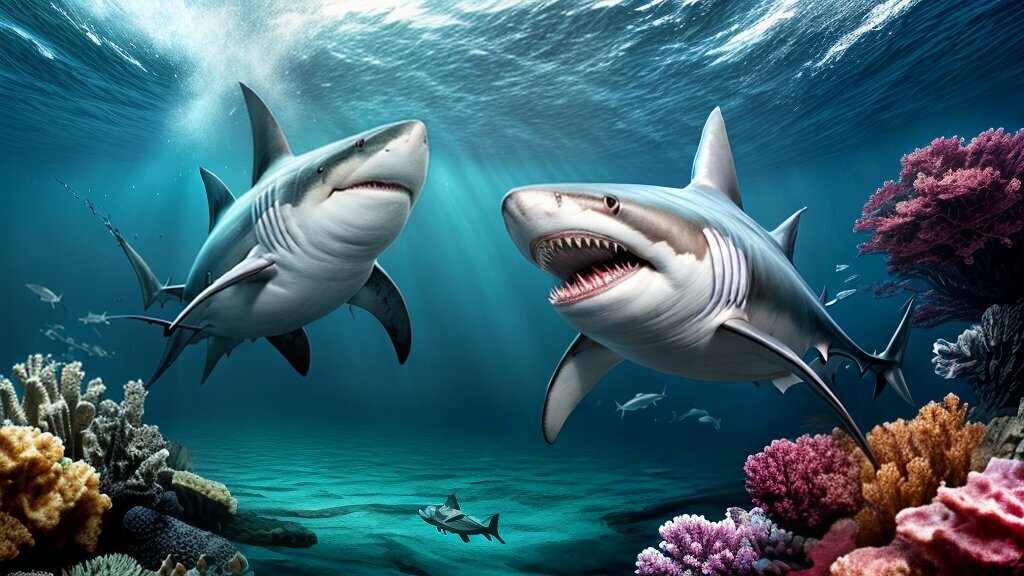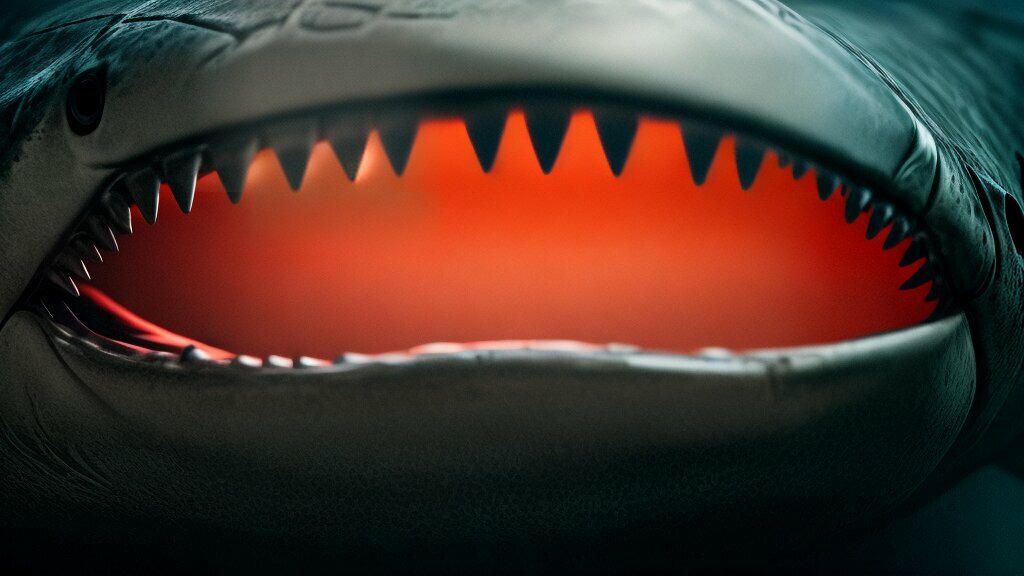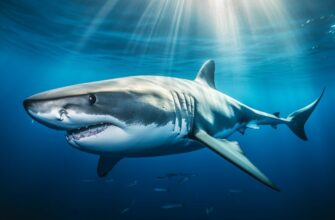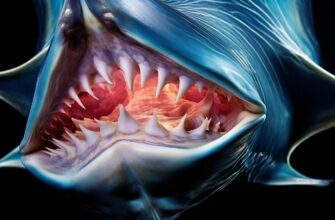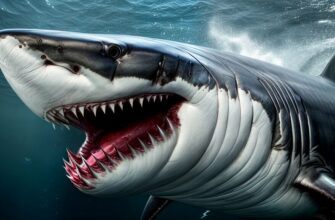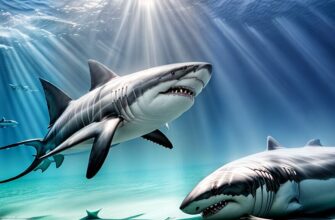Sharks are fascinating creatures that have captured the imagination of people for generations. They have been studied extensively, yet many misconceptions about them remain. One such misconception is whether sharks chew their food before swallowing. Let’s dive deeper into the world of shark feeding habits.
- Key Takeaways:
- How Do Sharks Eat? Understanding Shark Feeding Behavior
- Shark Teeth Anatomy and Function
- The Shark Digestion Process
- Do Sharks Bite or Chew Their Food?
- Conclusion
- FAQ
- Q: Do sharks chew their food?
- Q: How do sharks eat?
- Q: What is shark teeth anatomy and function?
- Q: What is the shark digestion process?
- Q: Do sharks bite or chew their food?
Key Takeaways:
- Sharks have a unique method of feeding compared to other animals.
- Sharks are carnivorous predators and use various methods to capture and consume prey.
- Shark teeth are adapted for different types of prey, and they constantly lose and replace their teeth throughout their lifetime.
How Do Sharks Eat? Understanding Shark Feeding Behavior
Sharks are known for their carnivorous diet and unique feeding behavior. Unlike other animals, sharks don’t chew their food in the same way. Instead, they use their sharp teeth to seize and tear prey into smaller pieces before swallowing.
There are many different types of shark species, and each has its own unique feeding habits. For example, some sharks use ambush hunting to capture their prey, while others scavenge for food or use filter feeding to consume small organisms.
One of the most fascinating aspects of shark feeding behavior is their ability to detect prey using their sense of smell. Sharks have an incredible sense of smell that allows them to detect even the smallest traces of blood in the water. This makes them skilled hunters and effective predators in their habitats.
Some shark species also have specialized organs called ampullae of Lorenzini that allow them to detect electrical currents in the water. This helps them locate prey that may be hiding or camouflaged.
One example of a shark species with unique feeding habits is the whale shark. Despite its massive size, the whale shark feeds on tiny plankton and small fish through filter feeding. This involves swimming with its mouth open to let water flow through its gills, and filtering out the food from the water.
Overall, shark feeding behavior is a fascinating and complex topic with many interesting facts to discover. From their sharp teeth to their sense of smell and unique feeding habits, sharks are truly amazing creatures.
Shark Teeth Anatomy and Function
Sharks are known for their sharp and intimidating teeth, but what makes their teeth so unique and effective in the feeding process?
Shark teeth are constantly being replaced and have varying shapes and sizes depending on the species and their diet. The most common type of shark tooth is the triangular, serrated tooth, which is designed for grasping and tearing prey. However, some species have needle-like teeth for catching small fish, while others have flat, plate-like teeth for crushing hard-shelled prey.
The teeth are anchored in several rows and are replaced as they become worn or lost. Unlike humans, sharks have a “conveyor belt” of teeth that move forward as new teeth are formed to replace old ones. This constant tooth replacement ensures that sharks always have functional and strong teeth for capturing prey.
The shape and function of shark teeth are important adaptations for their feeding behavior. For example, the Great White Shark has a large jaw and serrated teeth, which allow it to bite and tear large prey such as seals and sea lions. On the other hand, the Whale Shark, which feeds on plankton, has tiny teeth and instead uses its gill rakers to filter out food from the water.
The Shark Digestion Process
After sharks consume their prey, the digestion process begins. Sharks have a streamlined digestive system that is designed for efficiently breaking down and absorbing nutrients from their food.
The stomach of a shark is muscular and can contract and expand to grind up the food into smaller pieces. The food is then passed through the intestines, where most of the absorption of nutrients takes place.
Sharks have a unique digestive system that allows them to extract as much energy as possible from their food. They have a spiral valve intestine, which increases the surface area and allows for more efficient nutrient absorption.
Despite the efficient digestive system of sharks, they have a relatively short digestion time due to their high metabolic rate. This means that they need to constantly hunt and consume food to meet their energy needs.
“The stomach of a shark is muscular and can contract and expand to grind up the food into smaller pieces.”
Do Sharks Bite or Chew Their Food?
One of the most common questions people have about shark feeding habits is whether they chew their food like humans or other animals with jaws. The answer is no, sharks do not actually chew their food in the same way as we do.
Instead, sharks use their incredibly sharp and powerful teeth to bite and tear their prey into smaller, more manageable pieces before swallowing them whole. This process is known as “gripping and ripping.”
The structure and function of shark teeth are specifically adapted to their respective diets and hunting techniques. For example, the teeth of great white sharks have serrated edges that enable them to cut through the tough skin and bones of their prey, while hammerhead sharks have flattened teeth that allow them to crush and consume shellfish and crustaceans.
Despite the fact that sharks do not actually chew their food, their teeth are constantly in use and subject to wear and tear. To compensate for this, sharks continuously lose and replace their teeth throughout their lifetime.
Conclusion
In conclusion, sharks do not chew their food in the same way that humans or other animals with jaws do. They have a unique feeding process where they bite and tear their prey into smaller pieces before swallowing. Sharks are carnivorous predators and use various methods to capture and consume their prey, including ambush hunting, scavenging, and filter feeding.
Shark teeth are adapted for different types of prey and play a crucial role in the feeding process. They constantly lose and replace their teeth throughout their lifetime. After consuming their prey, sharks have a relatively short digestion time due to their high metabolic rate.
Overall, understanding the feeding habits and anatomy of sharks is important for researchers and conservationists to protect these apex predators and their ecosystems.
FAQ
Q: Do sharks chew their food?
A: No, sharks do not chew their food in the same way as humans or other animals with jaws. Instead, they bite and tear their prey into smaller pieces before swallowing.
Q: How do sharks eat?
A: Sharks are carnivorous predators and use various methods to capture and consume prey. Different shark species employ different feeding techniques, such as ambush hunting, scavenging, and filter feeding.
Q: What is shark teeth anatomy and function?
A: Shark teeth come in different types, such as serrated, needle-like, and flat teeth, and are adapted for different types of prey. Sharks constantly lose and replace their teeth throughout their lifetime.
Q: What is the shark digestion process?
A: After consuming prey, sharks undergo the digestion process. They have a specialized digestive system, including stomachs and intestines, and a relatively short digestion time due to their high metabolic rate.
Q: Do sharks bite or chew their food?
A: Sharks do not chew their food in the same way as humans or other animals. They use their teeth to seize and consume prey, biting and tearing it into smaller pieces before swallowing.


